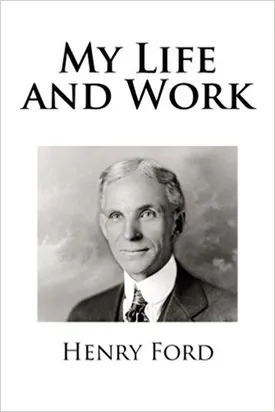My Life and Work by Henry Ford is an autobiography of one of the most influential businessmen of all time. He looks back on his life, from humble beginnings on the farm to becoming the face of the industrial revolution, and shares his insights into his successes and failures along the way.
Ford was born in rural Dearborn, Michigan in 1863, to William and Mary Ford. His father was an Irish immigrant, and his mother was from America. Ford was raised on a farm, and though his father didn’t own a great deal of land he was able to provide for his family. Though his parents lacked a formal education, they taught their children the importance of hard work, knowledge and the value of money.
When Ford was 16, he left the farm to work as an apprentice machinist. His first jobs included working for the Edison Illuminating Company, one of the earliest electricity suppliers, and as an engineer at the Westinghouse Company. Ford’s passion for engines led him to explore the new horizons of the Internal Combustion Engine, and this was the start of his journey to becoming an industrial giant.
By 1896, Ford had constructed his first automobile and the first vehicle to be mass produced by American manufacturing. His model T was revolutionary, introducing features that have become ubiquitous, such as the left-hand drive with foot operated brakes. The production methods Ford employed at his plant, including the use of moving assembly lines and interchangeable parts, drastically increased the efficiency and affordability of auto manufacturing.
The now famous Ford Motor Company was initially founded in 1903, and by 1906, the company was turning a profit and selling 15,000 cars each year. Ford went on to become one of the wealthiest and most influential businessmen of the 20th century. His philosophy revolved around the need to make everyday products affordable to all, and this was the driving force behind Ford’s success.
In 1908, Ford introduced the five-dollar daily wage, designed to make working at Ford more attractive than other occupations. He also introduced the eight-hour working day, and became one of the most vocal activists for workers’ rights in modern industry.
Beyond his business success, Ford was a philanthropist and activist for causes he believed in. He was a strong believer in the value of loyalty and community and worked hard to create a better world for those around him.
My Life and Work paints a vivid picture of Henry Ford, as a complex and dynamic figure with unique approaches to business, philanthropy, and employees rights. The lessons he offers readers are timeless, and continue to be applicable in modern society centuries after his death in 1947. Ford may have passed on, but the legacy he left behind continues to inspire those with ambitions to innovate and create.

